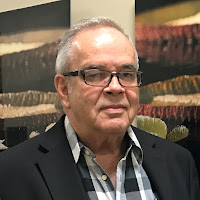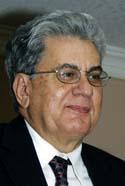5 Presidents Who Hid Their Health Issues
// JANUARY 18, 2018
Donald J. Trump’s presidential physical has many in the nation abuzz about whether all was revealed about our current President’s health. The White House doctor described him as being in great health, but outside experts have questioned that assessment given how high the President’s recorded cholesterol level is. Trump wouldn’t be the first president striving to portray himself as being in perfect health, though. Here are five more presidents who got sick while in office—but tried not to alert the public.
1
 |
President John F. Kennedy on crutches due to back ailment. (Credit: Ed Clark/The LIFE Picture Collection/Getty Images)John F. Kennedy
The image most people had of John F. Kennedy was one of youth and vitality. And, that was on purpose. JFK in fact lived in near-constant pain, but his poor health was kept a closely guarded secret for fear of damaging his political career. He had allergies, stomach troubles and suffered from chronic back pain, which was aggravated by his WWII service and required numerous surgeries. The back injury allegedly happened in 1937 while he was a student at Harvard, and it initially disqualified him from military service (his father later used his connections to get JFK into the Naval Reserve). He’d been ill before the injury, too. As a child he suffered from gastrointestinal issues which were later diagnosed as Addison’s disease, an endocrine disorder. In a strange twist of fate, one of the symptoms of Addison’s as well as a symptom of the steroids used to treat it is hyperpigmentation, which may be responsible for JFK’s perpetual “tan,” something viewers of his televised debate with Richard Nixon definitely noted.
|
2
 |
Franklin Roosevelt in his wheelchair with his dog and Ruthie Bie, the daughter of the Hyde Park caretaker. (Credit: Corbis via Getty Images)Franklin Delano Roosevelt
Today most Americans are aware that our longest serving President suffered from the effects of polio and relied on a wheelchair for mobility. However, during his tenure as commander in chief, FDR was able to hide the severity of his condition to an almost unimaginable extent by today’s standards. He was diagnosed with polio in 1921, when he was 39 years old. This was unusual because most polio victims at the time were children under the age of four. FDR worked tirelessly to rehabilitate his body in the years after contracting polio. As he’d been rendered a paraplegic, he used a specially designed wheelchair to get around most of the time. While President he wanted to project strength and virility, and so devised a way to “walk” during public appearances. It involved wearing leg braces, using a cane, and utilizing the arm of his son or a trusted advisor. Additionally, he asked the press to refrain from photographing him walking, or being transferred from his car, and the Secret Service was charged with interfering with those who attempted to capture images that might portray the President as “weak.”
3
|
 |
President Woodrow Wilson with his second wife Edith Bolling Galt Wilson, who was often referred to as “secret president” because of the important role she played in Wilson’s presidency during his long and debilitating illness following a stroke. (Credit: Stock Montage/Getty Images)Woodrow Wilson
When Woodrow Wilson was inaugurated in 1913, the well-known military physician Silas Weir Mitchell predicted he wouldn’t complete his first term due to his health. This prediction turned out to be false, but Wilson did have his share of health scares while in office. In 1919, a doctor noted that Wilson’s mouth was drooping on one end, a classic sign of minor stroke. It only deteriorated from there, and in October the President awoke to find himself partially paralyzed. His wife Edith sprung into action, both protecting his reputation and maintaining calm in the administration. She essentially acted as the president, and the country was kept in the dark about Wilson’s true condition until after his term ended in 1921.
Why didn’t Wilson’s Vice President Thomas Marshall take over? In 1919 the rules of presidential succession in the case of injury weren’t clearly defined. The 25th amendment wasn’t ratified until 1967, and so Wilson’s administration was operating under Article 2 of the constitution, which provided for a Vice Presidential takeover in the case of “death, resignation, or inability to discharge the powers and duties of the said office.” Wilson wasn’t dead and was unwilling to resign under these circumstances, so the Vice President refused to assume the presidency unless Congress passed a resolution declaring the office vacant.
4
President Eisenhower posing for first pictures since his heart attack. His red shirt reads “Much Better Thanks” over the pocket. (Credit: Bettmann Archive/Getty Images)
Dwight D. Eisenhower
When Eisenhower was elected in 1952, he was already suffering from abdominal adhesions resulting from a 1923 appendectomy. This would not be the end of Ike’s medical woes. In 1955 he had a heart attack, and though the public was assured that he had recovered, he was discouraged from running for reelection by a prominent cardiologist (advice he ignored). Eisenhower’s next medical issue, however, wouldn’t stem from his heart. In 1956 he was diagnosed with Crohn’s disease, a serious gastrointestinal disorder which required surgery. Shortly thereafter, Eisenhower suffered a stroke in 1957, but managed to complete his term in office. His heart continued to plague him until his death in 1969.
5
President Ronald Reagan holding a meeting with advisers while in the hospital for colon cancer surgery, 1985. (Credit: Corbis via Getty Images)
Ronald Reagan
Five years after completing his second term as president, Ronald Reagan was diagnosed with Alzheimer’s disease. His son, Ron Reagan, has stated that he saw signs of the disease while his father was in office, and later analysis detected variations in Reagan’s vocabulary during his time in office which could point to signs of dementia. Although there is little conclusive evidence that the 40th president suffered from Alzheimer’s while he was commander in chief, rumors of dementia dogged Reagan throughout his first presidential campaign, where much attention was focused on the 69-year-old’s age (at the time, Reagan was the oldest incoming President). What is confirmed is that Reagan had a few cancer scareswhile in office. In 1985 he had multiple polyps removed from his colon, and one was found to be cancerous. Two years later he had a basal cell epithelioma (skin cancer) removed from his nose.
|
Article Details:
5 Presidents Who Hid Their Health Issues
Author
Ryan MattimoreWebsite Name
History.comYear Published
2018Title
5 Presidents Who Hid Their Health IssuesURL
http://www.history.com/news/5-presidents-who-hid-their-health-issuesAccess Date
January 18, 2018Publisher
A+E Networks







Comentarios
Publicar un comentario